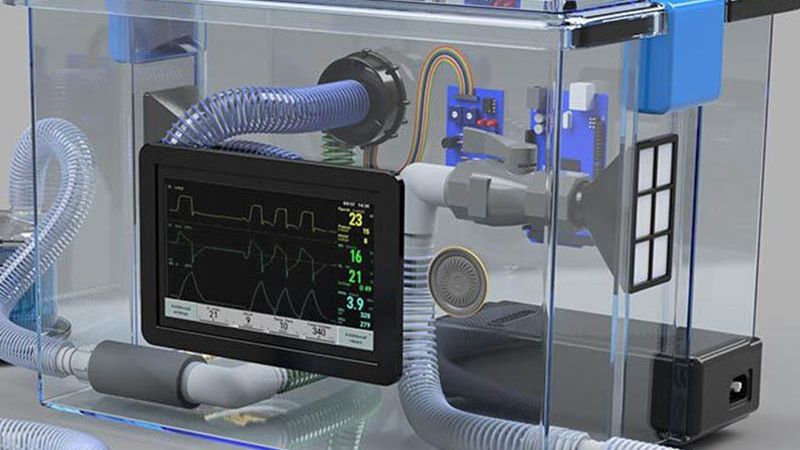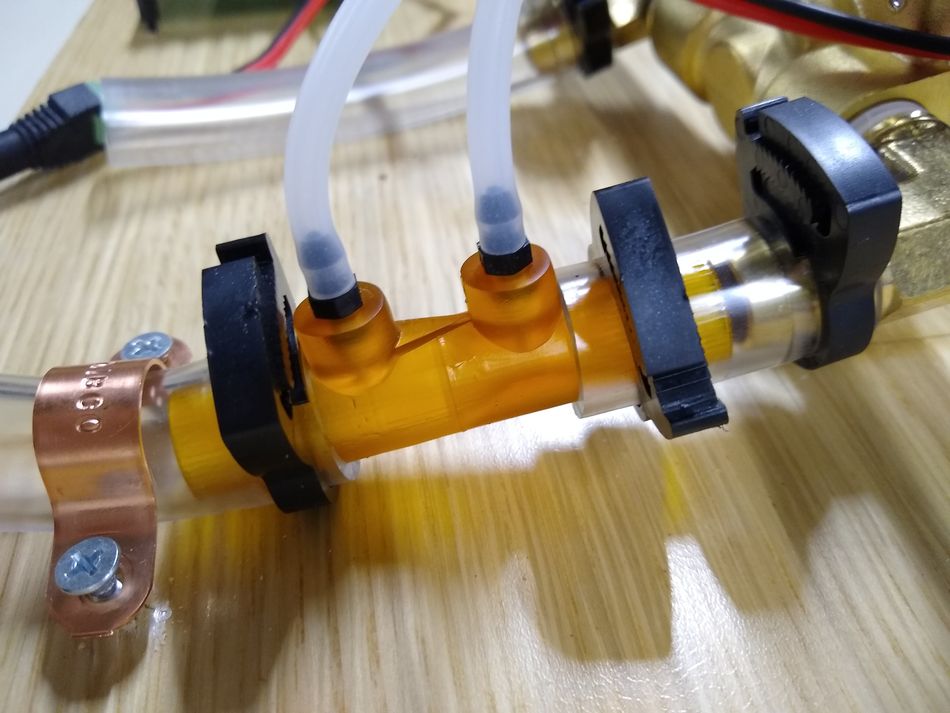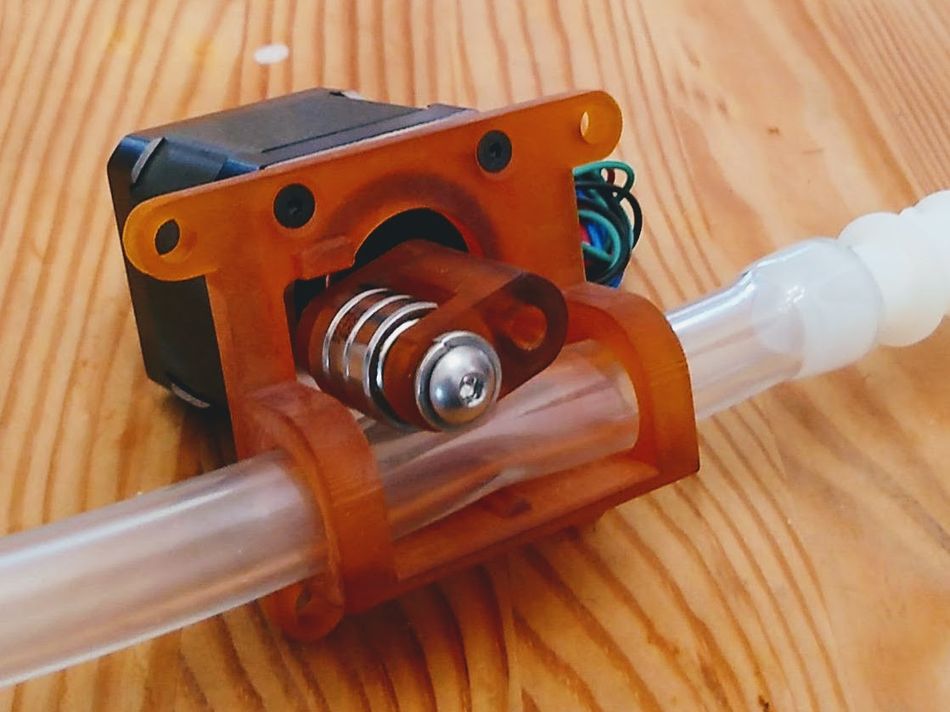Combating COVID-19 with Open Source: Behind the Scenes at Respira.Works
Ethan Chiu and Pallavi Gunalan from Respira.Works discuss the design process, challenges, and motivations for building an open-source ventilator to combat COVID-19.

Respira.Works
The Make it Real Challenge has now closed. We'll be announcing the finalists shortly! Stay tuned to our social media for updates.
Do you have a product, part, or concept that you want to bring to life? Wevolver and polySpectra invite designers, inventors, and engineers from across the world to submit ideas to the Make It Real 3D Printing Challenge. polySpectra will help the winners turn their ideas into reality using production-grade additive manufacturing.
Founder and hardware director of Respira.Works Ethan Chiu and Executive Director Pallavi Gunalan from Respira.Works joined Raymond Weitekamp, the CEO of additive manufacturing materials company, polySpectra, in a webinar to discuss Respira.Works' mission to create an open-source ventilator. This article gives an overview of that conversation.
Introduction
Analysts estimate 880,000 more ventilators are needed worldwide to meet the rising demand caused by COVID-19. Current supply chains are not robust enough to produce this number of ventilators, which means hundreds of thousands of patients might not receive the care they need to fight off the virus.
In light of this potentially deadly reality, Respira.Works has set out to create a ventilator that is affordable and easy to build in countries with developing economies and low-resource communities. The ventilator will be significantly cheaper than a standard medical device but still capable of providing advanced support regimes like Pressure Regulated Volume Control (PRVC) ventilation.

Respira.Works Origin Story
Respira.Works started with a phone call back in early March, between now founders of Respira.Works: Edwin Chiu, Elizabeth Hillstrom, and Ethan Chaleff. Ethan described seeing open source ventilator projects pop up in response to the pandemic and wondered if as a team they could get together to contribute. The three met up in Oakland and started trying to figure out what a lean ventilator would look like. They initially developed two prototypes, one based on a purely mechanical design, and another based on a blower control design - an electronic control design. Very quickly the three realized that the project needed more people, more money, and more structure - and so Respira.Works was born.
The project has since expanded to include dozens of engineers, healthcare workers, and other professionals around the world. The entire company is working voluntarily with funding for the development, hardware, and testing coming from a variety of both private and governmental institutions.
Open Source Principles
Respira.Works operate on open-source principles - all the code and hardware designs are available on their website. By pursuing an open-source IP-free design, the manufacturing of the device can’t be controlled by a single company reducing the risk that the distribution of the ventilator would only be available within major existing supply chains.
Using an open-source model enables communities to provide medical support to their people using resources other than money, for example, the use of local manufacturing, local engineering, training, and distribution. These are all things communities can provide when they have full access to the ventilator design.
Despite the massive challenges of keeping a design at this scale open-source, Respira.Works remain focused on producing a design that other countries can take and develop and manufacture for themselves. In other words, they are on a mission to radically democratize the ventilator.
Pallavi takes care to note that the project is also bigger than the ventilator. By bringing to a life a fully working model of an open-source high-end medical device, the doors open to other projects of a similar nature. Respira.Works are leading the way by developing the ventilator but also by forming a system for open-source medical devices.
Developing hardware as a remote team
One of the biggest challenges the project faced and continues to overcome is the distribution of the hardware development team. Ethan explains that in regular circumstances engineers would test hardware in a lab together, often working from several different prototypes at once. Respira.Works have to try and recreate this collegial and collaborative environment while working from multiple locations, without the support of a central HQ.
This is where the flexibility and short iteration cycle of 3D printing pushed the project forward. As part of this intense development process, additive manufacturing material company, polySpectra, jumped on board, printing and distributing valves and other precision parts for the project and then quickly shipping them out to members of the hardware team. The collaboration allowed Respira.Works to focus on testing and then quickly prototyping the next iteration before testing again. The use of polySpectra’s COR Alpha material meant the printed parts had the strength and accuracy required for ‘real world’ use.
3D printing was a crucial part of getting the ventilator through an intensely short design iteration cycle, Ethan makes it clear that for the team to achieve the speed at which they got the prototype working they needed to fall in love with failure. His advice for other design teams out there is to learn a lot by doing it wrong. He suggests getting the most out of additive manufacturing - leverage that it’s fast and cheap. “Don’t get bogged down over a design for weeks, only to get it printed and for it to be wrong. Embrace the printing as part of a fast cycle and build on your knowledge quickly. Don't give up on the failures you can learn from today by saving them for tomorrow!” he advises.
Testing
Respira Works have partnered with Hospitalito Atitlán, a small non-profit hospital in Guatemala, as a pilot location for our ventilator. There are currently fewer than 500 ventilators in the whole country. Once the quality and practicality of the design have been verified in this initial pilot the program will widen to include other communities in need of ventilators as rates of COVID-19 continue to rise.
The regulatory journey
Like all medical equipment the Respira.Works ventilator needs to go through rigorous medical testing and approval processes before it is given regulatory approval. This process will need to be repeated in every jurisdiction that which the ventilator is rolled out. The regulatory process is insanely difficult and demanding and also notoriously slow. Respira.Works are conscious that the ground they can break getting approval for the ventilator will be critically important for any future open-source medical device to be approved.
Get involved
Respira.Works are currently looking for new team members, especially people with experience in medical equipment regulatory approval or C++ programming. But no matter what your experience or qualifications, Respira.Works encourage you to get in touch. As their testing continues they also require assistance from people with a diverse array of skills, including technical writing, engineering, regulatory, PR, and more. You can see a full list of open positions on their website or email them at join-us@respira.works.
Watch the full webinar
Curious about the more technical aspects of the ventilator or want to know more about the Respira.Works culture and plans, check out the full webinar below.
How will you use COR Alpha?
Together with Wevolver, polySpectra is launching a global design challenge to search for innovative applications of COR Alpha.
Wevolver and polySpectra invite designers, makers, and thinkers from across the world to submit ideas to the Make it Real Design Challenge and make their ideas real.
We are looking for design teams, engineers, inventors, startups, and fledging companies that are designing products and ideas that can be amplified by COR Alpha printed parts. Read more about the material here.
The brief:
Submit a design for a stand-alone product or a component of a larger design. The winner should be able to provide a compelling explanation of how they are utilizing the characteristics of COR Alpha and demonstrate how COR Alpha can make their ideas real. Judging criteria will also include creativity and fit for additive manufacturing.
Parts must fit into a 190mm x 120 mm x 200mm build envelope.
Teams must be available during the challenge to collaborate with polySpectra and Wevolver.
Read more about the challenges prizes and background here.
To enter the challenge, fill out this short form by September 28 2020 before 12 pm (PT).
Check out some of the recent submissions to the challenge here.
Do you know someone with a great idea?
Nominate them for the Make it Real 3D Printing Challenge and they could win $25,000 of additive manufacturing services.
If you nominate the winner you’ll receive a $300 Amazon gift card.
Nominate them here.
Need anything else clarified?
Feel free to get in touch with us: Email: Jessica (at) wevolver.com
About the sponsor: polySpectra
polySpectra is an advanced materials company on a mission to transform polymer 3D-printing from a prototyping aid into a production manufacturing tool. polySpectra has developed a new class of modular light-activated resins, unlocking a broad spectrum of tailored engineering properties for production-grade additive manufacturing. We call this new family of additive materials COR, for Cyclic Olefin Resin. polySpectra’s first material, COR Alpha, demonstrates an unmatched combination of thermal, mechanical and chemical properties that enables additive manufacturing to compete with injection molding. polySpectra's technology is based on more than five years of chemical research and development at two leading research institutions: Caltech and Lawrence Berkeley National Laboratory. Based in Berkeley, CA - polySpectra helps inventors, designers and engineers make their ideas real.


